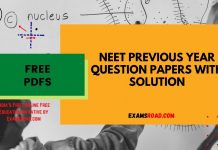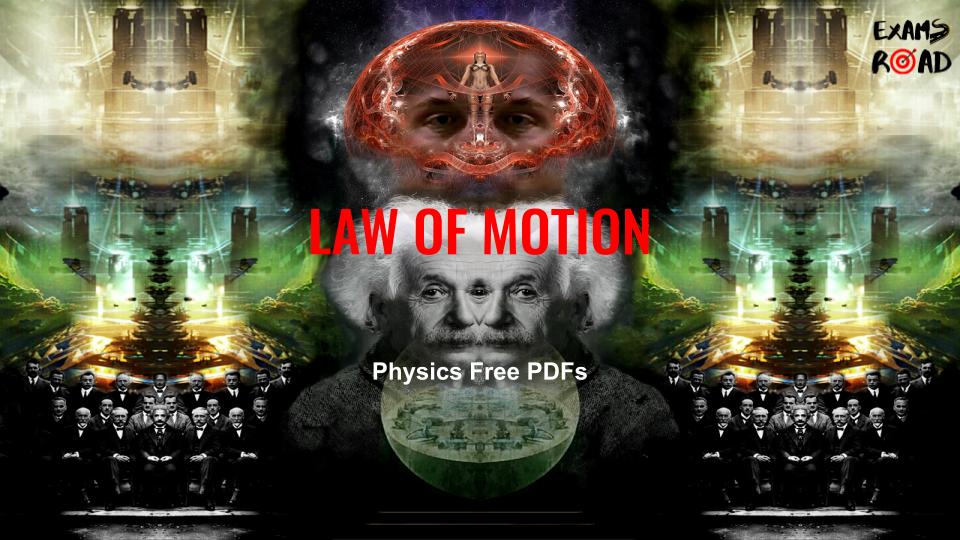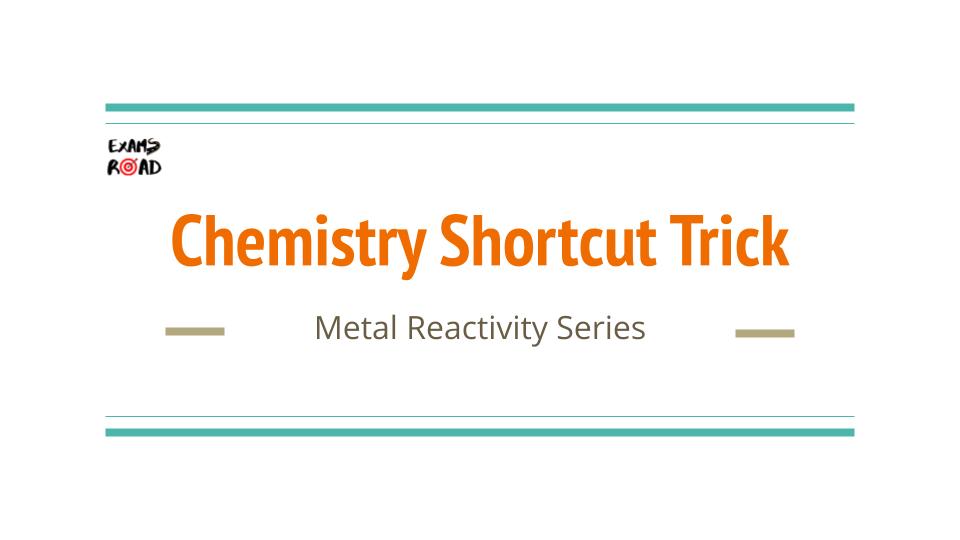Complete Physics Syllabus for NEET AIIMS (Topicwise) 2024
The National Eligibility cum Entrance Test (NEET) is a highly competitive examination in India for students aspiring to pursue undergraduate medical and dental courses. Physics is a crucial subject within the NEET syllabus, covering a vast range of topics.
In this article, we will provide a comprehensive and detailed overview of the physics syllabus for the NEET exam, highlighting key topics in each category and offering effective preparation strategies to ace the exam.
-
Mechanics: Mechanics focuses on the study of motion, forces, and energy. The key topics within this domain include:
a. Physical World and Measurement: Units, dimensions, and error analysis.
b. Kinematics: Equations of motion, projectile motion, circular motion, and relative motion.
c. Laws of Motion: Newton’s laws of motion, force, friction, and circular motion.
d. Work, Energy, and Power: Work-energy theorem, conservation of energy, and power.
e. System of Particles and Rotational Motion: Center of mass, rotational motion, moment of inertia, and torque.
f. Gravitation: Universal law of gravitation, acceleration due to gravity, planetary motion, and satellites.
-
Thermodynamics: Thermodynamics deals with heat, energy transfer, and the behavior of matter. The key topics include:
a. Thermodynamic Systems and Processes: Types of systems, state variables, and processes.
b. Laws of Thermodynamics: Zeroth, first, and second laws of thermodynamics.
c. Thermal Equilibrium and Heat Transfer: Heat transfer mechanisms, conduction, convection, and radiation.
d. Kinetic Theory of Gases: Ideal gas equation, kinetic theory assumptions, and gas laws.
e. Thermodynamic Equilibrium: Reversible and irreversible processes, entropy, and Carnot engine.
-
Electrodynamics: Electrodynamics focuses on the study of electric and magnetic fields, circuits, and electromagnetic waves. The key topics include:
a. Electrostatics: Coulomb’s law, electric field and potential, Gauss’s law, and capacitance.
b. Current Electricity: Ohm’s law, Kirchhoff’s laws, electrical circuits, and electrical measurements.
c. Magnetic Effects of Current and Magnetism: Biot-Savart law, Ampere’s law, magnetic field due to a current-carrying conductor, and magnetic properties of materials.
d. Electromagnetic Induction and Alternating Currents: Faraday’s law, Lenz’s law, AC circuits, transformers, and generators.
e. Electromagnetic Waves: Nature of electromagnetic waves, properties, and applications.
-
Optics: Optics deals with the study of light, its behavior, and its interaction with matter. The key topics include:
a. Ray Optics and Optical Instruments: Reflection, refraction, lenses, mirrors, prism, and optical instruments.
b. Wave Optics: Interference, diffraction, polarization, and Young’s double-slit experiment.
c. Dual Nature of Radiation and Matter: Photoelectric effect, matter waves, and Davisson-Germer experiment.
-
Modern Physics: Modern Physics encompasses the theories of quantum mechanics and relativity. The key topics include:
a. Dual Nature of Matter and Radiation: Wave-particle duality, photoelectric effect, and de Broglie wavelength.
b. Atoms and Nuclei: Atomic structure, Bohr model, radioactivity, nuclear reactions, and atomic spectra.
c. Electronic Devices: Semiconductors, diodes, transistors, logic gates, and communication systems.
d. Relativity: Special theory of relativity, time dilation, length contraction, mass-energy equivalence.
What is the Topic-wise Syllabus for NEET Physics Exam 2024 ?
This question must be coming in the mind of NEET Exam aspirants. So here we have shortlisted the detailed topicwise syllabus for NEET exam Physics section. In this article we have provided the topic wise weightage of marks so that student can get the exact idea that which topic is more important in exam.
Student can also download the Physics section syllabus PDF for NEET exam from below link that is provided at the end of article.
| PHYSICS TOPICS COVERED IN CLASS XI | ||
| Class XI | Weightage* | Details |
| Physical-world and measurement |
2%
|
Physics: Scope and excitement; nature of physical laws; Physics, technology and
society. Need for measurement: Units of measurement; systems of units; SI units, fundamental and derived units. Length, mass and time measurements; accuracy and precision of measuring instruments; errors in measurement; significant figures. Dimensions of physical quantities, dimensional analysis and its applications. |
| Chapter–1: Physical World | ||
| Chapter–2: Units and Measurements | ||
| Kinematics |
3%
|
Frame of reference, Motion in a straight line; Position-time graph, speed and
velocity. Uniform and non-uniform motion, average speed and instantaneous velocity. Uniformly accelerated motion, velocity-time and position-time graphs, for uniformly accelerated motion (graphical treatment). Elementary concepts of differentiation and integration for describing motion. Scalar and vector quantities: Position and displacement vectors, general vectors, general vectors and notation, equality of vectors, multiplication of vectors by a real number; addition and subtraction of vectors. Relative velocity. Unit vectors. Resolution of a vector in a plane-rectangular components. Scalar and Vector products of Vectors. Motion in a plane. Cases of uniform velocity and uniform acceleration- projectile motion. Uniform circular motion. |
| Chapter–3: Motion in a Straight Line | ||
| Chapter–4: Motion in a Plane | ||
| Laws of Motion |
3%
|
Intuitive concept of force. Inertia, Newton’s first law of motion; momentum and
Newton’s second law of motion; impulse; Newton’s third law of motion. Law of conservation of linear momentum and its applications. Equilibrium of concurrent forces. Static and Kinetic friction, laws of friction, rolling friction, lubrication. Dynamics of uniform circular motion. Centripetal force, examples of circular motion (vehicle on level circular road, vehicle on banked road). |
| Chapter–5: Laws of Motion | ||
| Work, Energy, and Power |
4%
|
Work done by a constant force and variable force; kinetic energy, work-energy theorem, power. Notion of potential energy, potential energy of a spring, conservative forces; conservation of mechanical energy (kinetic and potential energies); nonconservative forces; motion in a vertical circle, elastic and inelastic collisions in one and two dimensions. |
| Chapter–6: Work, Energy and Power | ||
| Motion of System of Particles and Rigid Body |
5%
|
Centre of mass of a two-particle system, momentum conservation and centre of
mass motion. Centre of mass of a rigid body; centre of mass of uniform rod. Moment of a force,-torque, angular momentum, conservation of angular momentum with some examples. Equilibrium of rigid bodies, rigid body rotation and equation of rotational motion, comparison of linear and rotational motions; moment of inertia, radius of gyration. Values of M.I. for simple geometrical objects (no derivation). Statement of parallel and perpendicular axes theorems and their applications. |
| Chapter–7: System of Particles and Rotational Motion | ||
| Gravitation |
2%
|
Kepler’s laws of planetary motion. The universal law of gravitation.
Acceleration due to gravity and its variation with altitude and depth. Gravitational potential energy; gravitational potential. Escape velocity, orbital velocity of a satellite. Geostationary satellites. |
| Chapter–8: Gravitation | ||
| Properties of Bulk Matter |
3%
|
Elastic behavior, Stress-strain relationship. Hooke’s law, Young’s modulus, bulk
modulus, shear, modulus of rigidity, poisson’s ratio; elastic energy. Viscosity, Stokes’ law, terminal velocity, Reynold’s number, streamline and turbulent flow. Critical velocity, Bernoulli’s theorem and its applications. Surface energy and surface tension, angle of contact, excess of pressure, application of surface tension ideas to drops, bubbles and capillary rise.Heat, temperature, thermal expansion; thermal expansion of solids, liquids, and gases. Anomalous expansion. Specific heat capacity: Cp, Cv- calorimetry; change of state – latent heat. Heat transfer- conduction and thermal conductivity, convection and radiation. Qualitative ideas of Black Body Radiation, Wein’s displacement law, and Green House effect. Newton’s law of cooling and Stefan’s law. |
| Chapter–9: Mechanical Properties of Solids | ||
| Chapter–10: Mechanical Properties of Fluids | ||
| Thermodynamics |
9%
|
Thermal equilibrium and definition of temperature (zeroth law of
Thermodynamics). Heat, work and internal energy. First law of thermodynamics. Isothermal and adiabatic processes. Second law of the thermodynamics: Reversible and irreversible processes. Heat engines and refrigerators. |
| Chapter–11: Thermal Properties of Matter | ||
| Chapter–12: Thermodynamics | ||
| Behavior of Perfect Gas and Kinetic Theory |
3%
|
Equation of state of a perfect gas, work done on compressing a gas.
Kinetic theory of gases: Assumptions, concept of pressure. Kinetic energy and temperature; degrees of freedom, law of equipartition of energy (statement only) and application to specific heat capacities of gases; concept of mean free path. |
| Chapter–13: Kinetic Theory | ||
| Oscillations and Waves |
3%
|
Periodic motion-period, frequency, displacement as a function of time. Periodic
functions. Simple harmonic motion(SHM) and its equation; phase; oscillations of a spring-restoring force and force constant; energy in SHM –Kinetic and potential energies; simple pendulum-derivation of expression for its time period; free, forced and damped oscillations (qualitative ideas only), resonance. Wave motion. Longitudinal and transverse waves, speed of wave motion. Displacement relation for a progressive wave. Principle of superposition of waves, reflection of waves, standing waves in strings and organ pipes, fundamental mode and harmonics. Beats. Doppler effect. |
| Chapter–14: Oscillations&SHM | ||
| Chapter–15: Waves | ||
| PHYSICS TOPICS COVERED IN CLASS XII | ||
| Class XII | Weightage* | Details |
| Electrostatics |
9%
|
Electric charges and their conservation. Coulomb’s law-force between two point
charges, forces between multiple charges; superposition principle and continuous charge distribution. Electric field, electric field due to a point charge, electric field lines; electric dipole, electric field due to a dipole; torque on a dipole in a uniform electric field. Electric flux, statement of Gauss’s theorem and its applications to find field due to infinitely long straight wire, uniformly charged infinite plane sheet and uniformly charged thin spherical shell (field inside and outside) Electric potential, potential difference, electric potential due to a point charge, a dipole and system of charges: equipotential surfaces, electrical potential energy of a system of two point charges and of electric diploes in an electrostatic field. Conductors and insulators, free charges and bound charges inside a conductor. Dielectrics and electric polarization, capacitors and capacitance, combination of capacitors in series and in parallel, capacitance of a parallel plate capacitor with and without dielectric medium between the plates, energy stored in a capacitor, Van de Graaff generator. |
| Chapter-1: Electric Charges and Fields | ||
| Chapter-2: Electrostatic Potential and Capacitance | ||
| Current Electricity |
8%
|
Electric current, flow of electric charges in a metallic conductor, drift velocity and
mobility, and their relation with electric current; Ohm’s law, electrical resistance, V-I characteristics (liner and non-linear), electrical energy and power, electrical resistivity and conductivity. Carbon resistors, colour code for carbon resistors; series and parallel combinations of resistors; temperature dependence of resistance. Internal resistance of a cell, potential difference and emf of a cell, combination of cells in series and in parallel. Kirchhoff’s laws and simple applications. Wheatstone bridge, metre bridge. Potentiometer-principle and applications to measure potential difference, and for comparing emf of two cells; measurement of internal resistance of a cell. |
| Chapter-3: Current Electricity | ||
| Magnetic Effects of Current and Magnetism |
5%
|
Concept of magnetic field, Oersted’s experiment. Biot-Savart law and its
application to current carrying circular loop. Ampere’s law and its applications to infinitely long straight wire, straight and toroidal solenoids. Force on a moving charge in uniform magnetic and electric fields. Cyclotron. Force on a current-carrying conductor in a uniform magnetic field. Force between two parallel current-carrying conductors-definition of ampere. Torque experienced by a current loop in a magnetic field; moving coil galvanometer-its current sensitivity and conversion to ammeter and voltmeter. Current loop as a magnetic dipole and its magnetic dipole moment. Magnetic dipole moment of a revolving electron. Magnetic field intensity due to a magnetic dipole (bar magnet) along its axis and perpendicular to its axis. Torque on a magnetic dipole (bar magnet) in a uniform magnetic field; bar magnet as an equivalent solenoid, magnetic field lines; Earth’s magnetic field and magnetic elements. Para-, dia-and ferro-magnetic substances, with examples. Electromagnetic and factors affecting their strengths. Permanent magnets. |
| Chapter-4: Moving Charges and Magnetism | ||
| Chapter-5: Magnetism and Matter | ||
| Electromagnetic Induction and Alternating Currents |
8%
|
Electromagnetic induction; Faraday’s law, induced emf and current; Lenz’s Law,
Eddy currents. Self and mutual inductance. Alternating currents, peak and rms value of alternating current/ voltage; reactance and impedance; LC oscillations (qualitative treatment only), LCR series circuit, resonance; power in AC circuits, wattles current. AC generator and transformer. |
| Chapter-6: Electromagnetic Induction | ||
| Chapter-7: Alternating Current | ||
| Electromagnetic Waves |
5%
|
Need for displacement current.
Electromagnetic waves and their characteristics (qualitative ideas only). Transverse nature of electromagnetic waves.Electromagnetic spectrum (radio waves, microwaves, infrared, visible, ultraviolet, x-rays, gamma rays) including elementary facts about their uses. |
| Chapter-8: Electromagnetic Waves | ||
| Optics |
10%
|
Reflection of light, spherical mirrors, mirror formula. Refraction of light, total
internal reflection and its applications optical fibres, refraction at spherical surfaces, lenses, thin lens formula, lens-maker’s formula. Magnification, power of a lens, combination of thin lenses in contact combination of a lens and a mirror. Refraction and dispersion of light through a prism. Scattering of light- blue colour of the sky and reddish appearance of the sun at sunrise and sunset. Optical instruments: Human eye, image formation and accommodation, correction of eye defects (myopia and hypermetropia) using lenses. Microscopes and astronomical telescopes (reflecting and refracting) and their magnifying powers. Wave optics: Wavefront and Huygens’ principle, reflection and refraction of plane wave at a plane surface using wavefronts. Proof of laws of reflection and refraction using Huygens’ principle. Interference, Young’s double hole experiment and expression for fringe width, coherent sources and sustained interference of light. Diffraction due to a single slit, width of central maximum. Resolving power of microscopes and astronomical telescopes. Polarisation, plane polarized light; Brewster’s law, uses of plane polarized light and Polaroids. |
| Chapter-9: Ray Optics and Optical Instruments | ||
| Chapter-10: Wave Optics | ||
| Dual Nature of Matter and Radiation |
6%
|
Photoelectric effect, Hertz and Lenard’s observations; Einstein’s photoelectric
equation- particle nature of light. Matter waves- wave nature of particles, de Broglie relation. Davisson-Germer experiment (experimental details should be omitted; only conclusion should be explained). |
| Chapter-11: Dual Nature of Radiation and Matter | ||
| Atoms and Nuclei |
3%
|
Alpha- particle scattering experiments; Rutherford’s model of atom; Bohr model,
energy levels, hydrogen spectrum. Composition and size of nucleus, atomic masses, isotopes, isobars; isotones. Radioactivity- alpha, beta and gamma particles/ rays and their properties decay law. Mass-energy relation, mass defect; binding energy per nucleon and its variation with mass number, nuclear fission and fusion. |
| Chapter-12: Atoms | ||
| Chapter-13: Nuclei | ||
| Electronic Devices |
9%
|
Energy bands in solids (qualitative ideas only), conductors, insulators and
semiconductors; semiconductor diode- I-V characteristics in forward and reverse bias, diode as a rectifier; I-V characteristics of LED, photodiode, solar cell, and Zener diode; Zener diode as a voltage regulator. Junction transistor, transistor action, characteristics of a transistor; transistor as an amplifier (common emitter configuration) and oscillator. Logic gates (OR, AND, NOT, NAND and NOR). Transistor as a switch. |
Chapter-14: Semiconductor Electronics |
||
Preparation Strategies:
- Understand Concepts: Develop a strong conceptual understanding of each topic by referring to standard textbooks, study materials, and online resources. Pay attention to the derivations, principles, and underlying theories.
- Solve Numerical Problems: Physics involves extensive problem-solving. Practice a wide range of numerical problems to apply the concepts and enhance problem-solving skills.
- Practice Previous Year’s Questions: Solve previous year’s NEET exam papers to familiarize yourself with the question patterns, time management, and understand the exam’s difficulty level.
- Visualize Concepts: Utilize diagrams, graphs, and models to visualize abstract concepts and phenomena, aiding better understanding and retention.
- Conduct Regular Revision: Dedicate time for regular revision to reinforce concepts, formulas, and their applications.
- Seek Guidance: Whenever you encounter difficulties or have doubts, seek guidance from teachers, mentors, or online platforms to clarify your understanding and strengthen weak areas.
Conclusion: Mastering the complete physics syllabus for the NEET exam requires diligent effort, consistent practice, and a strong grasp of fundamental concepts. By understanding the key topics, practicing extensively, and seeking guidance when needed, you can effectively prepare for the physics section and increase your chances of achieving a high score in the NEET exam. Remain focused, motivated, and maintain a positive mindset throughout your preparation. With proper planning and dedication, success in the NEET exam is within your reach. Good luck!
Please share and support us.
ExamsRoad.com
“Bringing Excellence To Students”
| Complete Subject-Wise NEET Exam Syllabus | |
| Physics Syllabus for NEET AIIMS | Click Here |
| Chemistry Syllabus for NEET AIIMS | Click Here |
| Biology Syllabus for NEET AIIMS | Click Here |






![100+ MCQs on Chemical Bonding PDF – Free Objective Question & Answers [Chemistry NEET JEE] Chemical Bonding PDF](https://examsroad.com/wp-content/uploads/2023/06/Chemical-Bonding-PDF-100x70.jpg)












